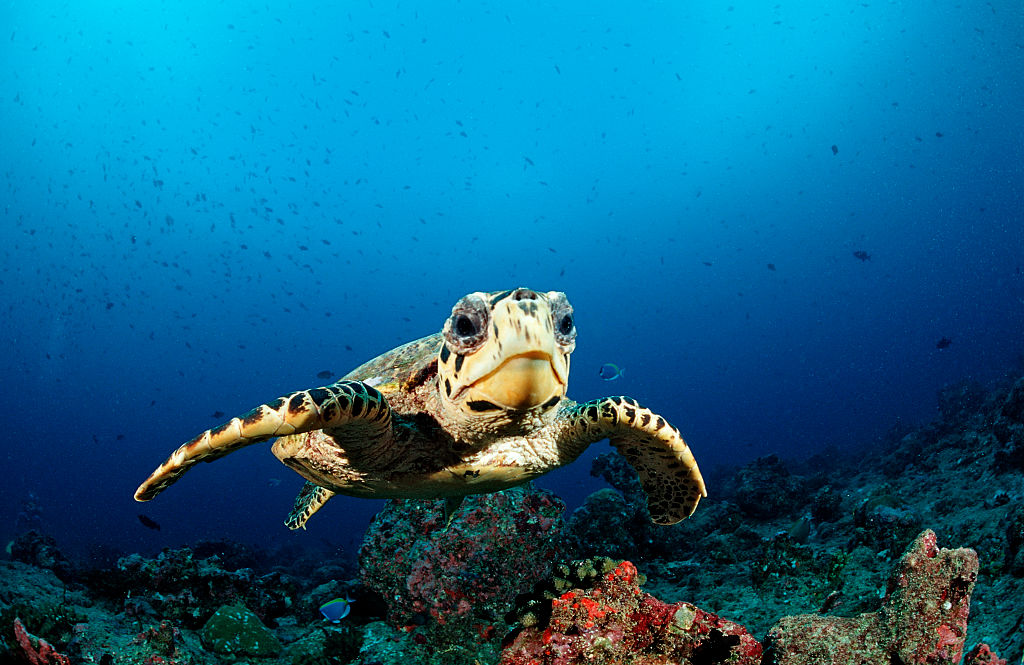U.N. agrees on landmark treaty to protect marine life


The United Nations on Saturday agreed to a historic treaty to protect marine life and biodiversity in the world's oceans. The accord marks a long-awaited milestone in a years-long effort to safeguard the planet's seas.
The U.N. said the new High Seas Treaty "would place 30 percent of the world's oceans into protected areas, put more money into marine conservation, and covers access to and use of marine genetic resources." The treaty will "put limits on how much fishing can take place, the routes of shipping lanes and exploration activities like deep-sea mining," BBC News added.
The high seas — every area that lies 200 nautical miles beyond a nation's territorial waters — are often called "the world's last true wilderness," CNN notes. They make up more than 60 percent of the world's oceans.
The Week
Escape your echo chamber. Get the facts behind the news, plus analysis from multiple perspectives.

Sign up for The Week's Free Newsletters
From our morning news briefing to a weekly Good News Newsletter, get the best of The Week delivered directly to your inbox.
From our morning news briefing to a weekly Good News Newsletter, get the best of The Week delivered directly to your inbox.
The first international legislation to protect the oceans, called the U.N. Convention on the Law of the Sea, was penned in 1982, and its provisions were updated in 1994. Efforts to renegotiate these protections have been repeatedly stalled over the last few decades, The Associated Press reported, mainly due to disagreements within the U.N. over funding and protections for the fishing industry.
The treaty represents a major landmark in the conservation efforts of the world's oceans. The 30 percent of the high seas that will now be covered is a major jump from the prior legislation, which protected just 1.2 percent of the oceans.
The new treaty comes as ocean life continues to face an existential crisis. A report by the International Union for Conservation of Nature (IUCN) released last December found that nearly 10 percent of global marine species were at risk of extinction.
A free daily email with the biggest news stories of the day – and the best features from TheWeek.com
Justin Klawans has worked as a staff writer at The Week since 2022. He began his career covering local news before joining Newsweek as a breaking news reporter, where he wrote about politics, national and global affairs, business, crime, sports, film, television and other news. Justin has also freelanced for outlets including Collider and United Press International.
-
 The Week’s big New Year’s Day quiz 2026
The Week’s big New Year’s Day quiz 2026Quiz of the Year How much do you remember about 2025’s headlines? Put yourself to the test with our bumper quiz of the year
-
 Is tanking ruining sports?
Is tanking ruining sports?Today's Big Question The NBA and the NFL want teams to compete to win. What happens if they decide not to?
-
 ‘Netflix needs to not just swallow HBO but also emulate it’
‘Netflix needs to not just swallow HBO but also emulate it’instant opinion Opinion, comment and editorials of the day
-
 5 recent breakthroughs in biology
5 recent breakthroughs in biologyIn depth From ancient bacteria, to modern cures, to future research
-
 Blue Origin launches Mars probes in NASA debut
Blue Origin launches Mars probes in NASA debutSpeed Read The New Glenn rocket is carrying small twin spacecraft toward Mars as part of NASA’s Escapade mission
-
 Dinosaurs were thriving before asteroid, study finds
Dinosaurs were thriving before asteroid, study findsSpeed Read The dinosaurs would not have gone extinct if not for the asteroid
-
 Canyons under the Antarctic have deep impacts
Canyons under the Antarctic have deep impactsUnder the radar Submarine canyons could be affecting the climate more than previously thought
-
 SpaceX breaks Starship losing streak in 10th test
SpaceX breaks Starship losing streak in 10th testspeed read The Starship rocket's test flight was largely successful, deploying eight dummy satellites during its hour in space
-
 Rabbits with 'horns' sighted across Colorado
Rabbits with 'horns' sighted across Coloradospeed read These creatures are infected with the 'mostly harmless' Shope papilloma virus
-
 Lithium shows promise in Alzheimer's study
Lithium shows promise in Alzheimer's studySpeed Read Potential new treatments could use small amounts of the common metal
-
 Scientists discover cause of massive sea star die-off
Scientists discover cause of massive sea star die-offSpeed Read A bacteria related to cholera has been found responsible for the deaths of more than 5 billion sea stars
